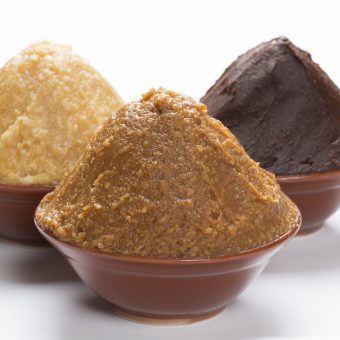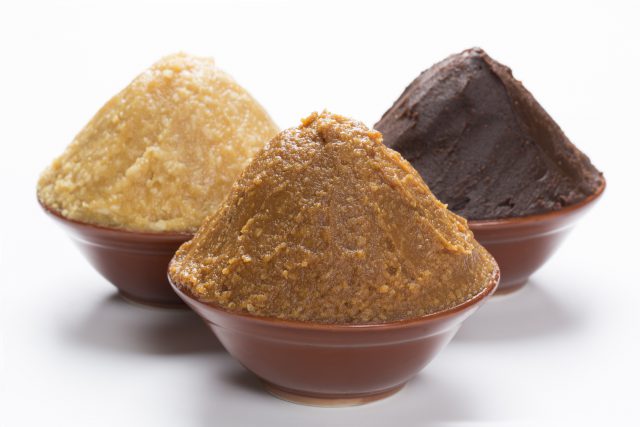
MISO (fermented soybean paste)
Miso soup is the best.
It’s best to get all your nutrients by adding many ingredients to your miso soup. Salt content is surprisingly low. One serving of miso soup is 1.4g sodium.
Effect on health and beauty:
・Anti-aging: vitamin E, daidzein and saponin prevent oxidation in your body.
・Female hormone: Isoflavone prevents the activation of female hormones, menopause, osteoporosis, breast cancer and cervical cancer.
・Anemia: Minerals are abundant, such as iron, potassium, phosphorus, and sulfur. The absorption of heme-iron in iron is extremely good, so that it promotes blood circulation and leads to improvements against increased sensitivity to cold.
・Lifestyle-related diseases: The protein, dietary fiber, lecithin and saponin decrease the cholesterol levels in the body to help prevent lifestyle-related diseases.
Overview:
・Miso is made from fermenting soy beans and rice koji with salt. Original form of miso came from China.
・By the Nara Period, people were eating miso in a form developed uniquely in Japan. Miso was a luxury item back then.
・There are three types of miso: rice miso, wheat miso and bean miso. The most common is the rice miso. Miso is then classified as white or red miso, or sweet or salty depending of the ratio of rice koji as well as the amount of salt that is used.
Characteristics:
・The nutrients already abundant in soy beans are further enhanced by the fermentation process.
・Red miso (red and salty) is low in calories. Its anti-oxidants prevent blemishes and freckles.
・An amino acid called the gamma-aminobutyric acid included in white miso (beige color and sweet) has a relaxation effect.
Major area of production:
Japan
Nutrients:
Protein, essential amino acid, vitamin B group, potassium, magnesium and calcium

